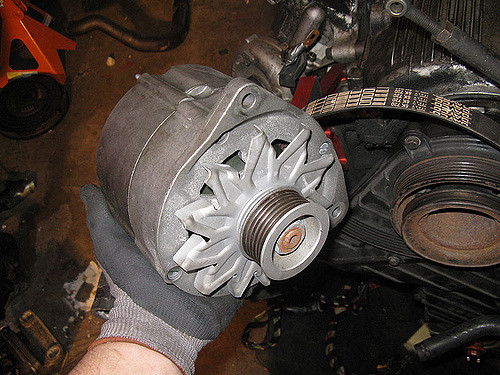If you’re a car owner who likes to handle basic car maintenance needs, you may already know what an alternator is or even serviced it yourself before. If you’re relatively new to car maintenance, the alternator may be among the parts of your car you only learn about when something is wrong with it. Some car alternators are easy to access and can be taken care of from right under the hood. Others can be found around the bottom of your engine, requiring the vehicle to be raised with a lift in order to replace the alternator.
Some cases even involve removing other parts of your car, such as the tire and wheel assembly, drive axle, splash guards, or the A/C compressor, thereby increasing the difficulty of the repair job. With this in mind, here is a quick guide to alternators that will hopefully increase your understanding of your vehicle.
What are Alternators?
The alternator in your vehicle develops a current by spinning around a magnet at high speeds and then running that current through the current rectifier, which changes alternating current (AC) to direct current (DC). This allows the alternator to create the power that runs the vehicle’s electronics and charges its battery.
How Does an Alternator Work?
The alternator is a part of the vehicle’s starting/charging system, with its main job being to maintain the battery’s charge. Alternators create AC power via electromagnetism, formed by the rotor and stator relationship. By converting AC current to DC current, the alternator powers the car’s electrical system and maintains the proper charge the battery needs to operate.
How is an Alternator Made?
The alternators found within most light trucks and passenger cars are fairly lightweight and small. Many are made with a lightweight aluminum outer housing, because the metal doesn’t magnetize and dissipates the great amount of heat that’s produced from generating electrical power.
When Will an Alternator Fail?
As with any part of a vehicle’s exterior, alternators have many moving parts, which are subject to considerable use and stress from moisture, heat, and cold weather. Therefore, an alternator’s internal parts will wear out gradually. Alternators can also be subject to contamination from pollutants, chemicals, and elements of the surrounding environment, such as salt, dirt, or oil. Symptoms of a failing alternator include the following:
- Engine performance or drivability issues
- Dim lights
- Warning light remaining lit
- Discharged or weak battery
- A burnt smell coming from the alternator
- Loud grinding noise or other unusual sounds from the alternator
- Different electrical systems malfunctioning
These symptoms don’t always indicate a failing alternator, so additional testing may be required. These symptoms could implicate other issues as well, such as battery drain or damage, starter motor failure, electrical charging system failure, and engine stalling issues.
Photo Courtesy of l0lnix via Creative Commons License

